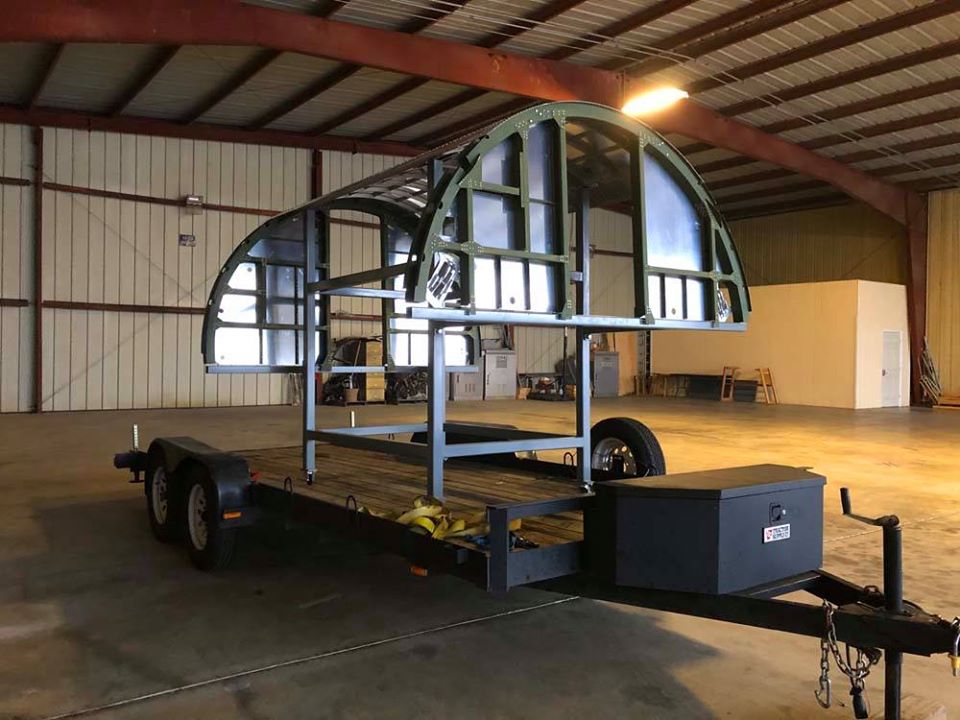
The biggest news since our last update was that we finished the bomb bay for Liberty Belle (44-85734), delivering it to Douglas, Georgia in early November.
As you may recall, Liberty Belle (of the Liberty Foundation) caught fire over Illinois back in 2011. While her forward half is being restored in Georgia, we are rebuilding her back half. Now that her bomb bay is finished, we can continue work on her rear fuselage, which sits in our hangar beside the forward fuselage of Lucky Thirteen.
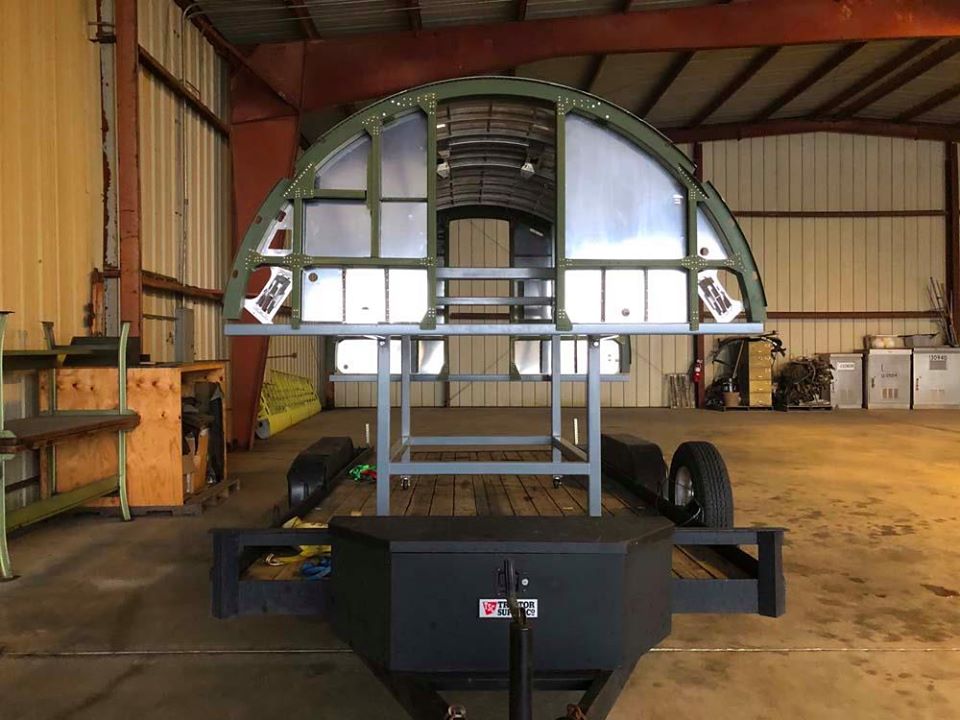
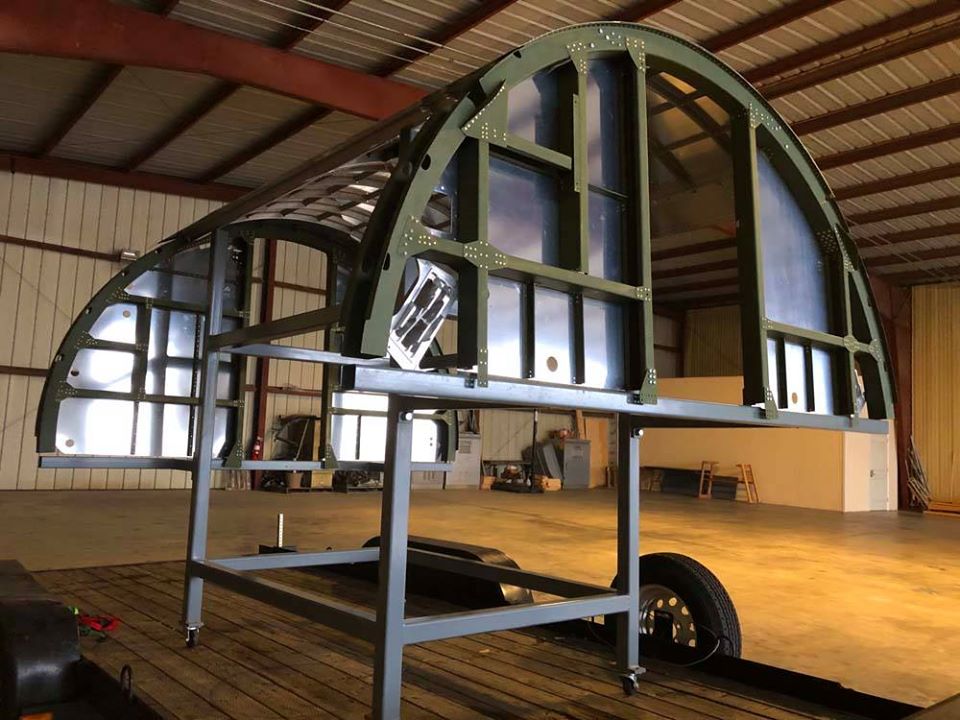
Since the bomb bay from Lucky Thirteen was used as a pattern, we are now free to permanently reassemble this area and move forward on her.
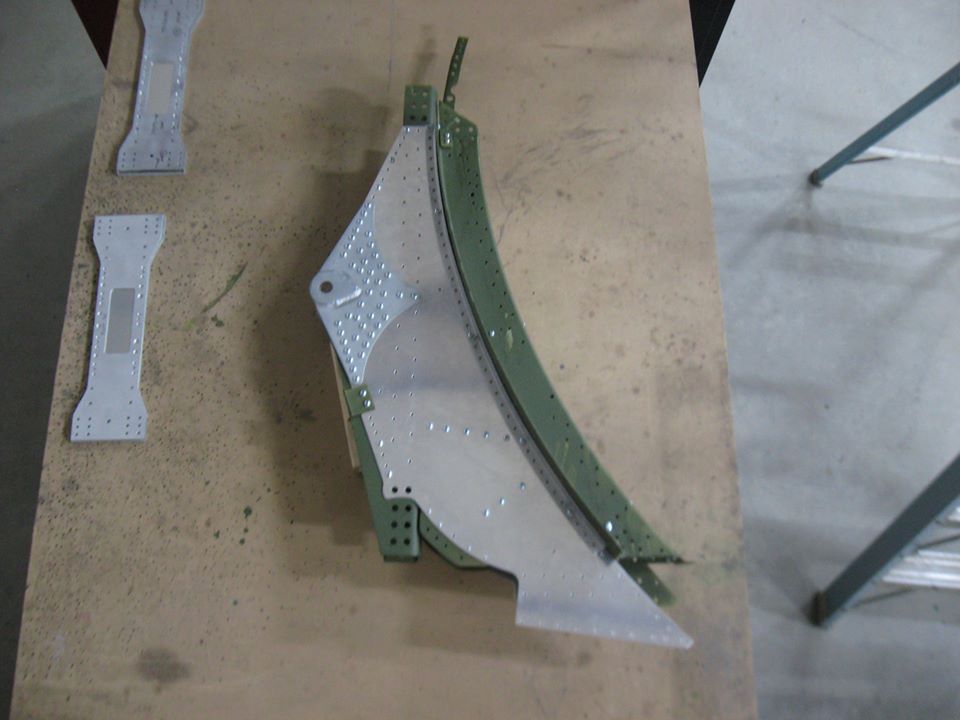
Photos taken 26 October 2019.
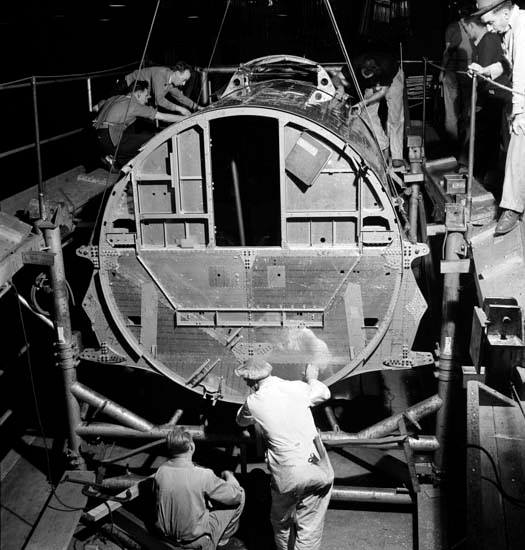
If you would like to help in the completion of Lucky Thirteen‘s bomb bay, there are a myriad of ways you can do so. For example, you can track down some of the B-17’s Type A-2 bomb release boxes. Or, if you are so inclined, there are even a few companies out there that produce replica USAAF bombs. We are also looking for volunteers. If you have experience in metal casting or have the ability to print white ink (for decals), or if you just want to volunteer at the hangar, just drop us line!
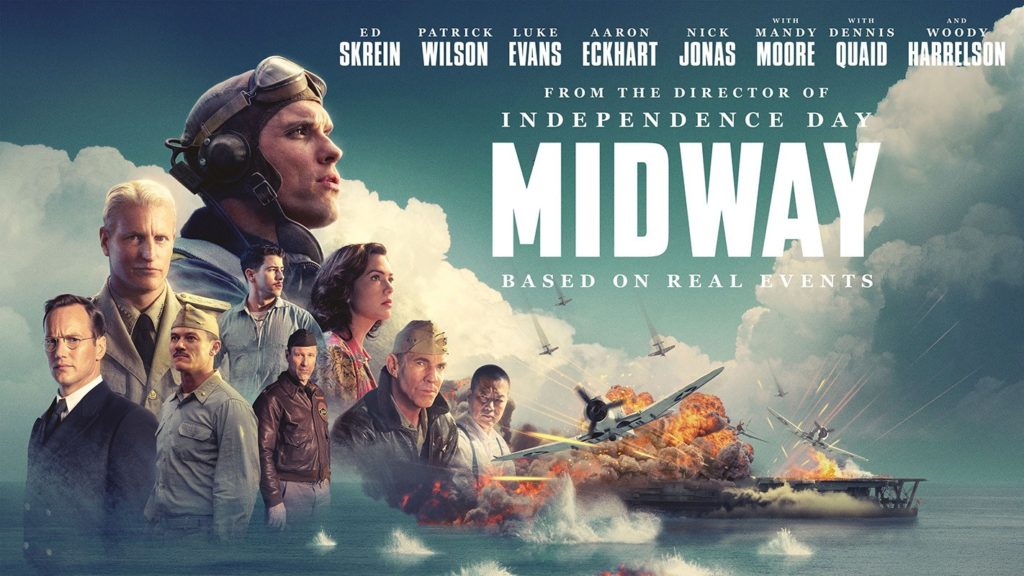
Our good friend Joshua DeJong at TheRiggerDepot recently had some exciting news, as his work appeared in the new film Midway, released on 8 November.
I will admit that I was a bit skeptical of the film, knowing the previous work of director Roland Emmerich and not being a fan of computer-generated (CGI) aircraft. But, while the CGI was not great, I was pleasantly surprised at how faithful the finished film was in regard to the actual events at the Battle of Midway – far more than one would typically expect from Hollywood. If you have not seen it, we recommend checking it out, as it is a film very similar to old war epics like The Longest Day (1962) and Tora Tora Tora (1970).
The uniforms and flight gear are top notch (of course) but perhaps the best thing about the movie is that the filmmakers actually created a replica TBD Devastator. Up until now, no full-size representation of this aircraft remained in existence, and the producers donated the replica to the USS Midway (CV-41) Museum in San Diego, California after filming. This is a gracious act for both the aviation and history communities, and it may be the closest we ever come to seeing a real TBD Devastator again.
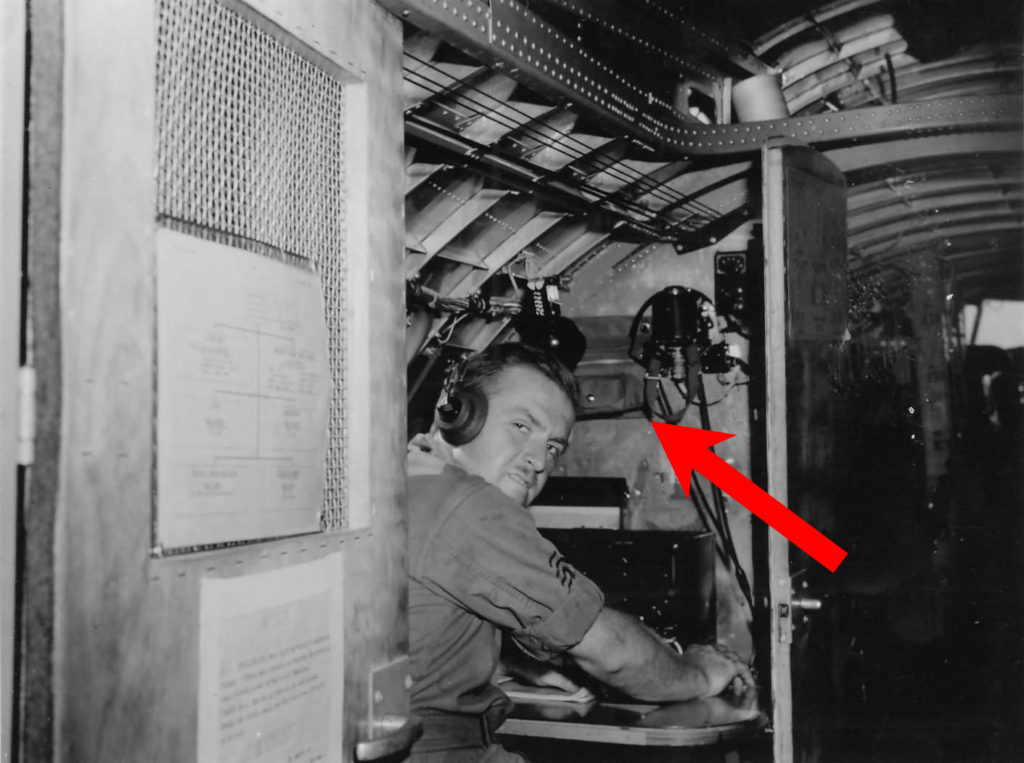
Speaking of Joshua…
Joshua has been working with Hangar Thirteen and the National Museum of the US Air Force to create Aeronautic First Aid Kits for Memphis Belle (41-24485, 91BG) and Lucky Thirteen (42-3455, 384BG).
You see, since both B-17s are F models, we have been working together on odd pieces not normally seen on today’s surviving B-17s. One of these are the Aeronautic First Aid Kits as, thanks to research by our friend Karl Hauffe, we found the type shown here was the most common wartime variant.
We purchased an original example of this kit and sent it to Joshua, where he was able to analyze it and create an exact replica. When the team at the NMUSAF is ready, Joshua will create a set of six – three for Lucky Thirteen, three for Memphis Belle.
On an unrelated note – the photo above is from the radio compartment of a late-B-17G. The giveaway is the screen window in the Station 6 interior door. We are happy to say that we recreated one such door for Liberty Belle this year.
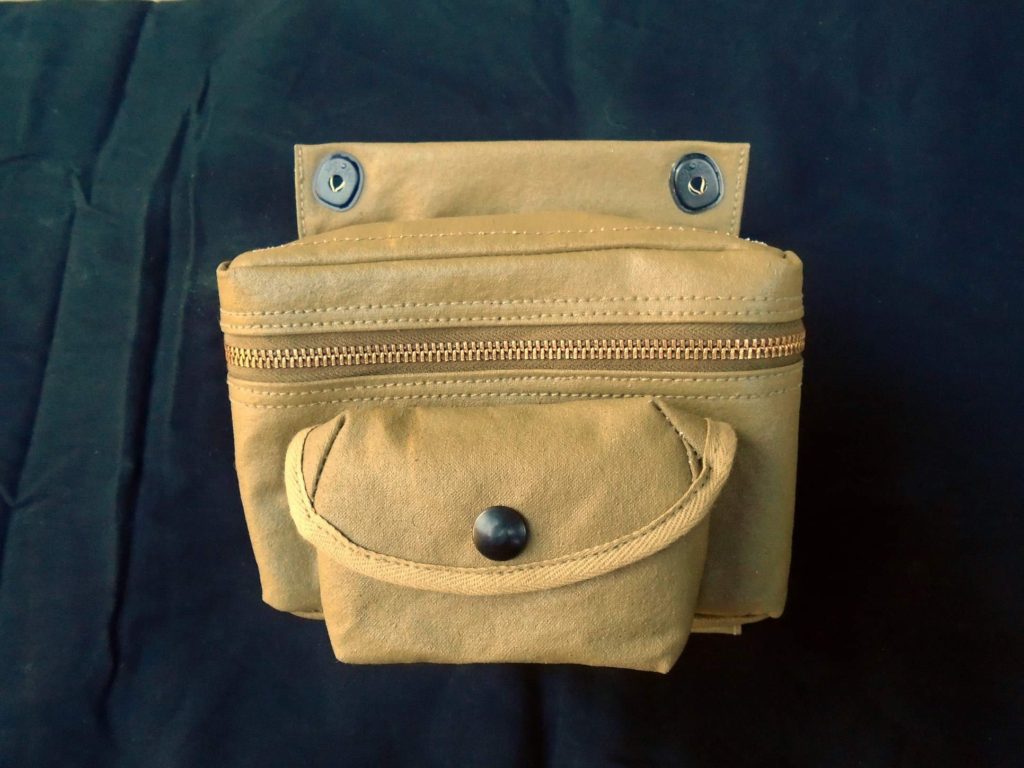
Joshua’s first replica Aeronautic First Aid Kit.
Photo taken 19 February 2019.
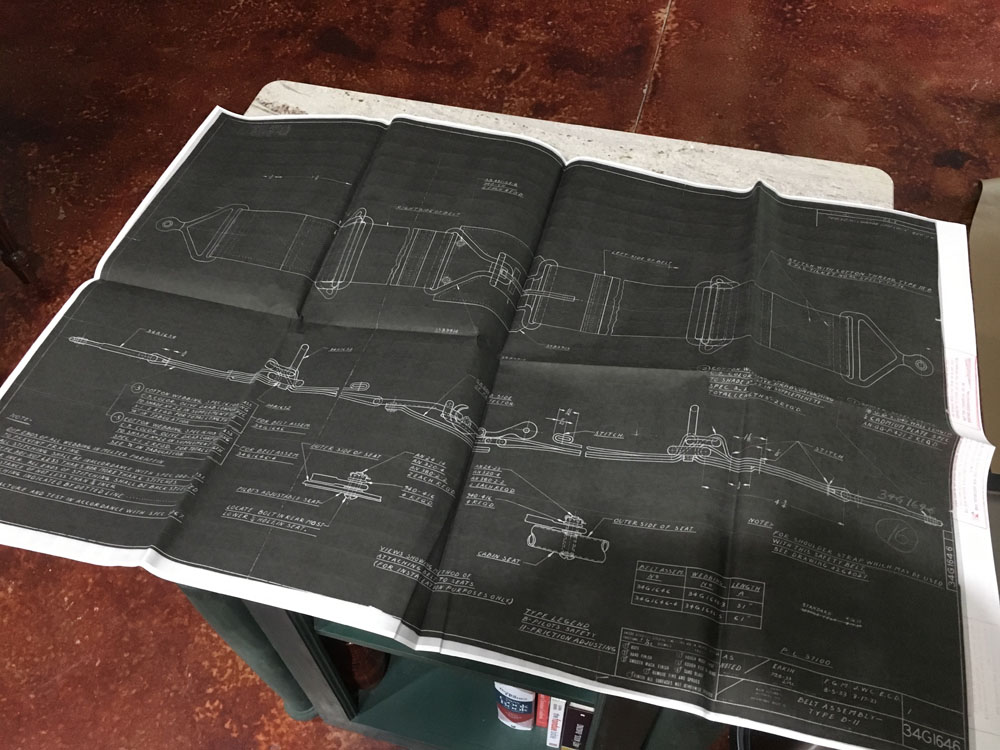
Likewise, Joshua offered to help us with the creation of Lucky Thirteen‘s seatbelts.
The blueprints call for six Type B-11 Seatbelts (34G1646), which were made during the war by Waco Aircraft. The blueprints shown here were copied for us by the Smithsonian Institution’s National Air & Space Museum and were later sent to Joshua. Joshua is confident he can match the original fabric pieces but is still working to recreate the seatbelts’ hardware.
Photo taken 7 May 2019.
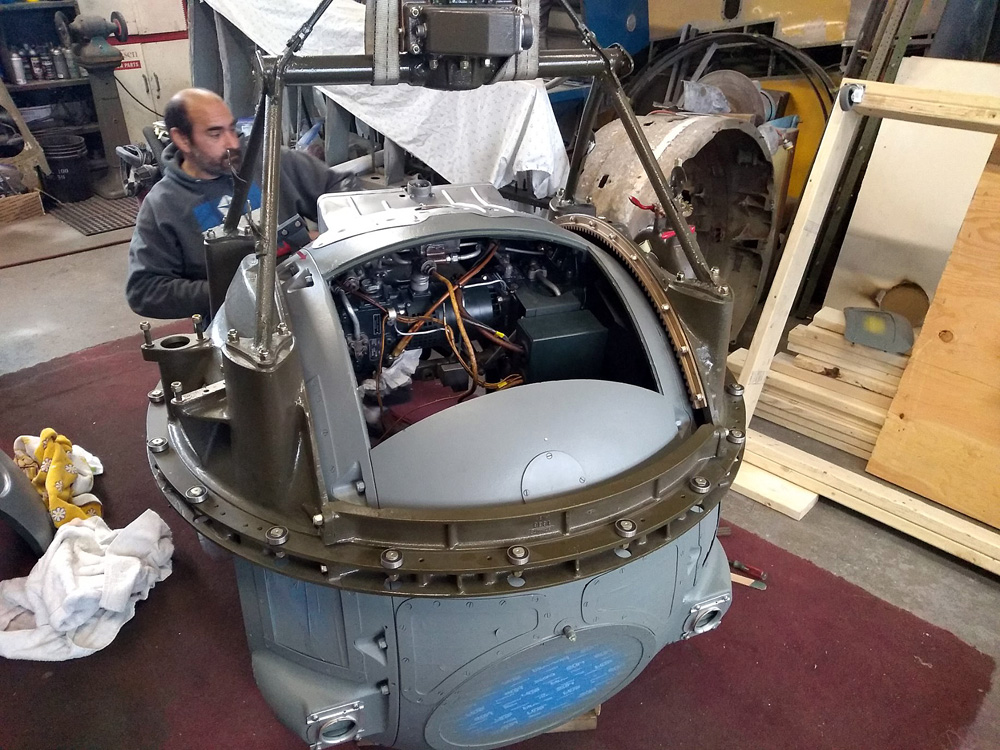
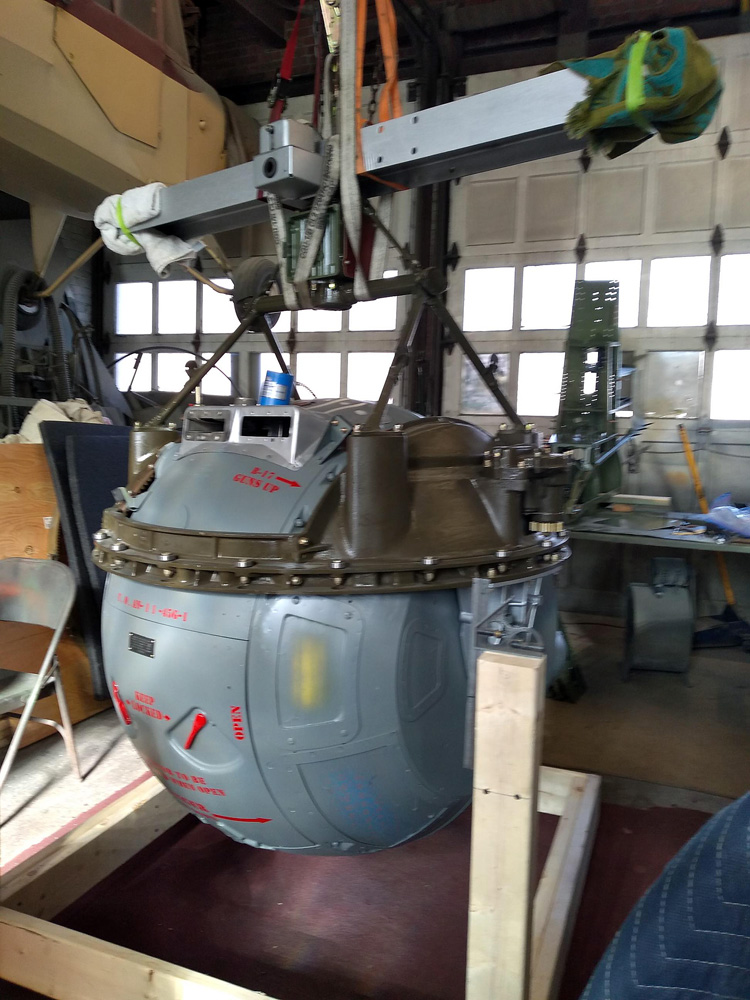
Another one of our friends who has gone far this year is gun turret expert Fred Bieser.
When Fred came by for a visit back on 1 May, he was on his way to Maryland to deliver parts to Harland Avezzie and his North American Restorations shop. The two work together a good bit and these pictures are a great example of that. The photos above were taken by Harland and show an A-2A ball turret he is rebuilding for the Liberty Foundation (where it is likely to be installed in Liberty Belle). The olive drab ring assembly was in the back of Fred’s car when he came by our shop!
Lucky Thirteen‘s ball turret will be an earlier variant than the type shown here, and we are already in the process of planning our turret rebuilds with Fred. This will be a long and expensive process and we will need A LOT of help from our supporters if we are to have accurate, working F-model turrets.
Photos taken 4 December 2019.
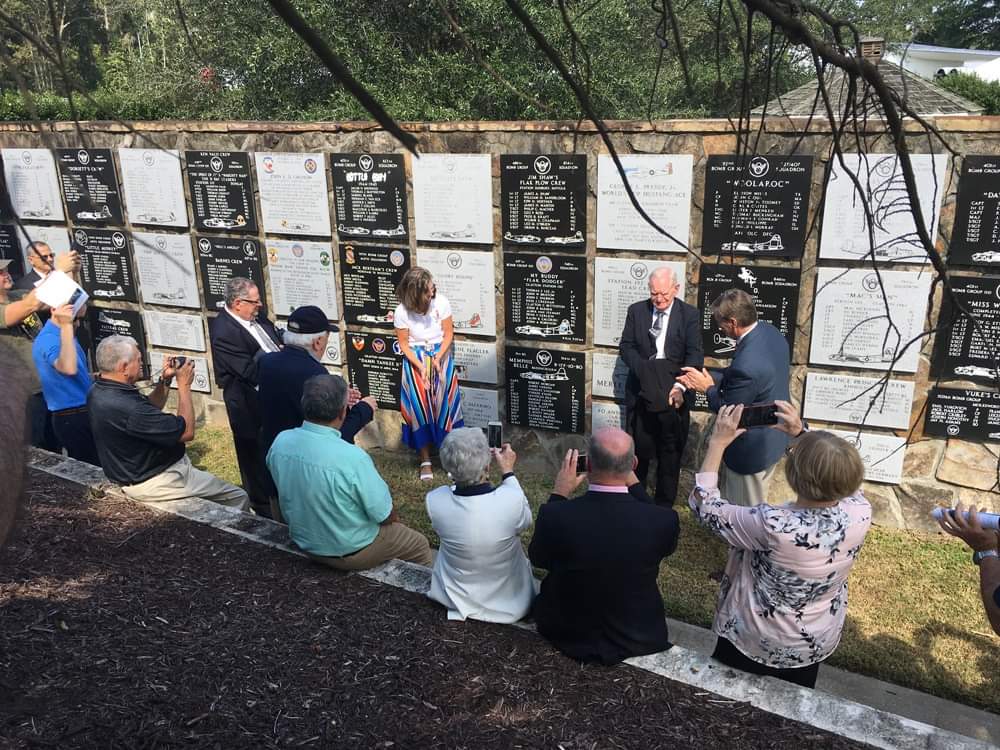
Speaking of turrets…
In the process of preparing for our turret program, we have been collecting wartime manuals on B-17F top and ball turrets. A lot of help came in the form of Harry Friedman of Memphis, Tennessee, who offered to copy several rare manuals from his private collection. We were finally able to meet in person when Jerry McLaughlin of the National Museum of the Mighty Eighth Air Force invited me to attend a ceremony Dr. Friedman was officiating, overseeing a plaque dedicated to the Memphis Belle in the museum’s memorial garden.
Dr. Friedman is standing left of center in the photo above, and to the right of him, in a multi-colored skirt, is the daughter of the Belle‘s pilot, Bob Morgan. Interestingly enough, Morgan was a native of Asheville, NC and the bridge that leads to our hangar is in fact, Colonel Robert K. Morgan Bridge.
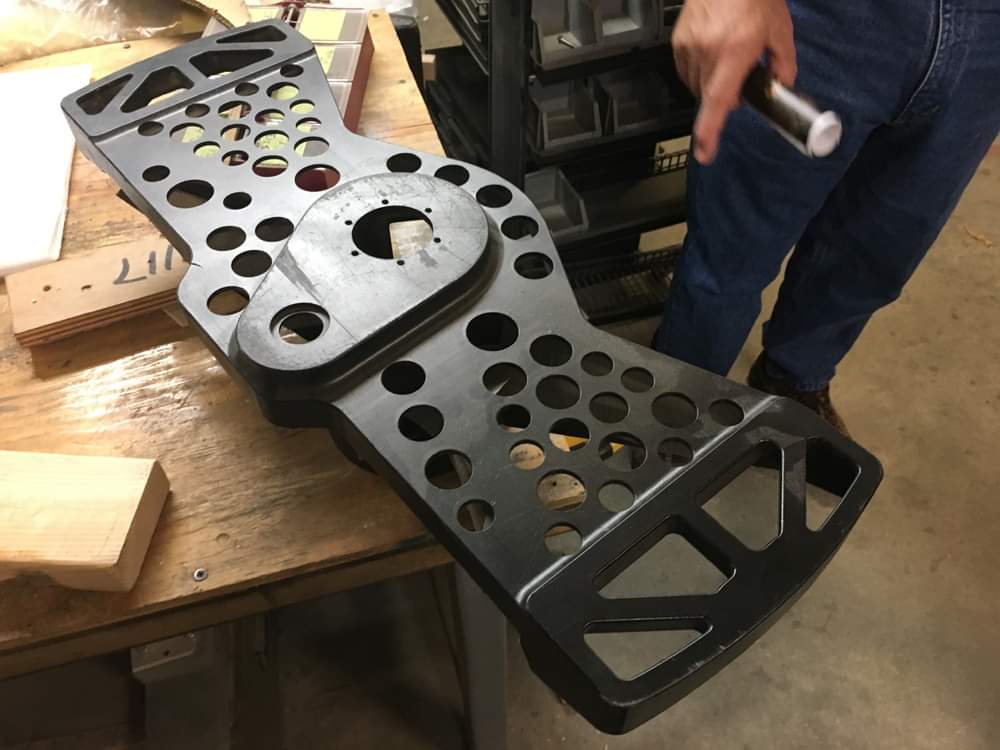
We were particularly anxious to see the museum’s restoration shop and their work rebuilding an A-1C Top Turret. The piece you see here is a resin copy of an original turret base loaned to the museum by Texas Raiders(44-83872) of the Commemorative Air Force. The original piece was scanned and copied using a 3D printer, with the resin copy being used to create an aluminum mold for the finished replica.
Top turret body and chassis parts are extremely rare and it may be necessary for us to do something similar in rebuilding the turrets for Lucky Thirteen.
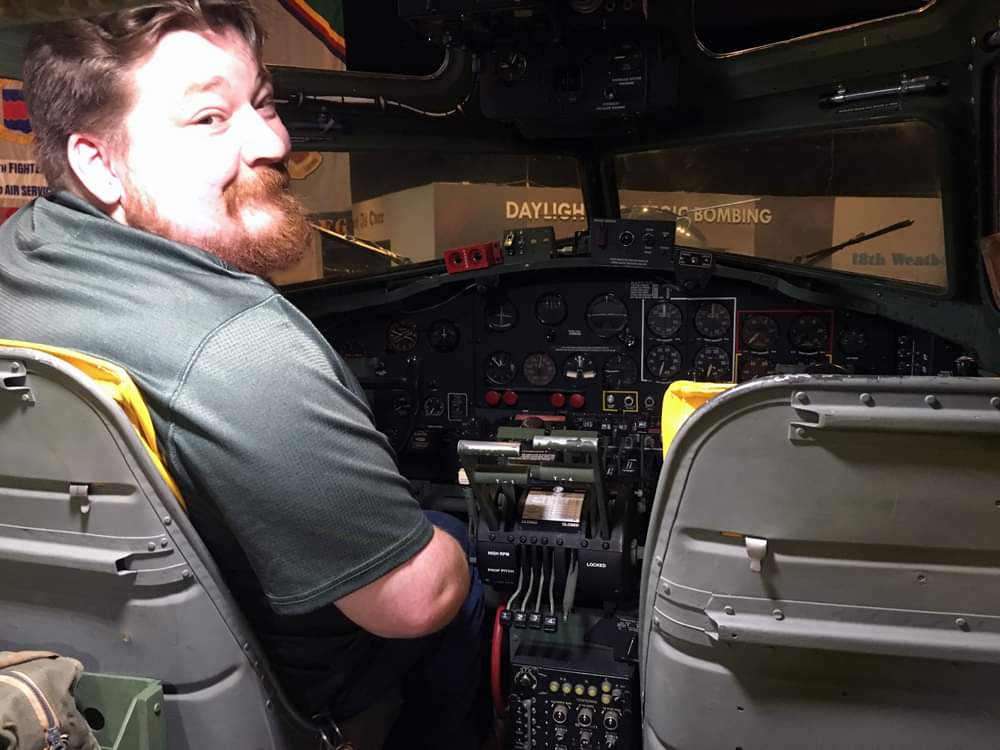
Yours truly in the cockpit of the museum’s B-17G City of Savannah (44-83814). Our thanks to Harry Friedman, Jerry McLaughlin, and the team at the National Museum of the Mighty Eighth Air Force for their kindness and hospitality!
Photos taken 25 September 2019.
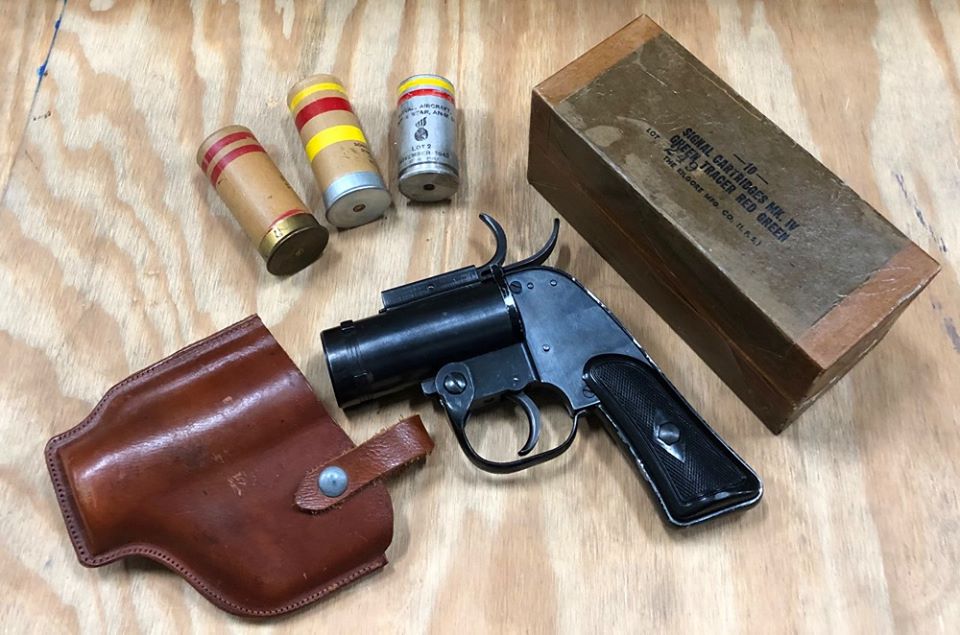
Our friend Andy Rivera came for a visit during the last week of October (the same night we were photographing Liberty Belle‘s bomb bay, in fact). Having endured pouring rain and a nine hour drive, we were honored that he still wanted to drop by. Andy had some amazing things he wished to donate to Lucky Thirteen…
First was an amazing set of flare equipment: an AN-M8 flare gun and holster, a still-sealed box of flares, and three flare cartridges (all dated 1943 to coincide with Lucky Thirteen).
The cartridges are, from left to right, an AN-M37 double-star red, an AN-M40 double-star red-yellow, and an AN-M31 double-star red-yellow.
Photo taken 26 October 2019.

Keeping close to their Dodge WC-54s, paramedics await the landing of a 381BG B-17 after it has fired flares to indicate wounded aboard.
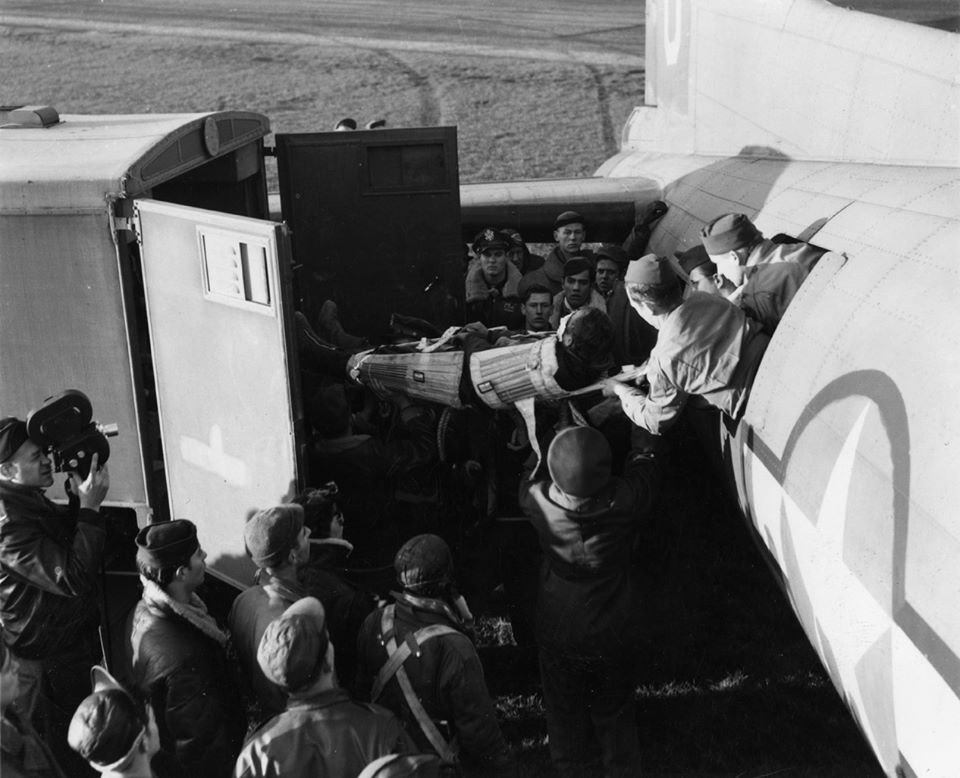
Medics retrieve a wounded airman from a 94BG B-17. Note how the aircraft has pulled directly off the runway onto the grass, stopping as quickly as possible.
Also note the dark line around the national insignia. A War Department directive issued on 28 June 1943 saw the standard circle-star roundel be upgraded to include white bars and a thick red border. The red border was not well-received and the War Department called for the red line to be replaced with a blue one on 18 September 1943. It is evident that ground crews hand-painted the blue border over the red one on this aircraft. Lucky Thirteen saw service throughout the short period where the US roundel had a red border.
Photo taken 16 December 1943.
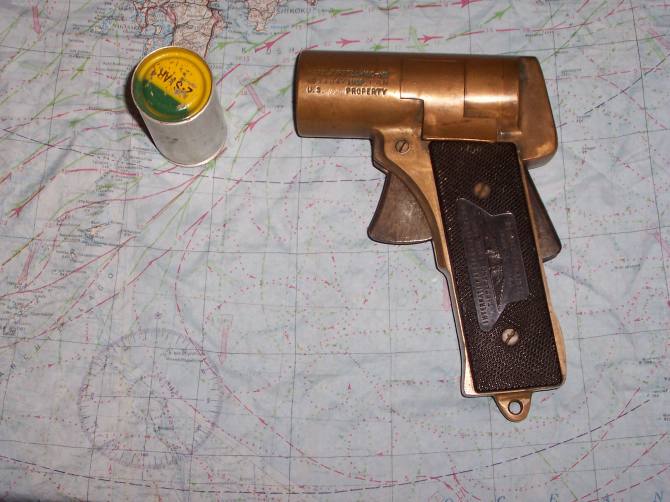
The AN-M8 was actually not the first flare pistol equipped on the B-17. The original flare pistol was the AN-M2, shown here – a short-barreled brass pistol with an oversized grip for gloved hands – and was discontinued after “O-Oboe” (42-30231, 95BG), which entered service in May 1943. The AN-M31 cartridge Andy brought was originally designed for this pistol, as indicated by its lack of a rim.
The lighter AN-M8 proved far more versatile than the AN-M2, being able to fire both rimmed and rimless cartridges. The AN-M8 is one of history’s most produced flare guns and remained in US service all the way until 2002. Our AN-M8 is a wartime example made by Eureka Vacuum Cleaners of Detroit, Michigan. Thanks to Andy for this amazing bit of history!
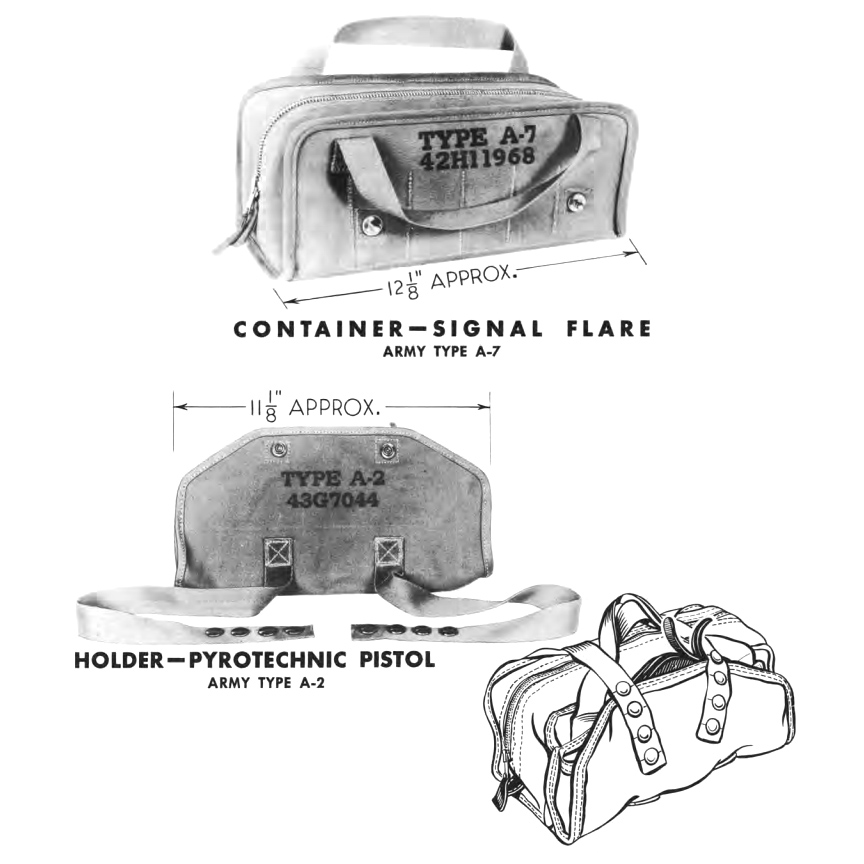
The flare gun and its cartridges were kept on a small shelf on the back of the pilot’s seat – one of which I shared with everyone here.
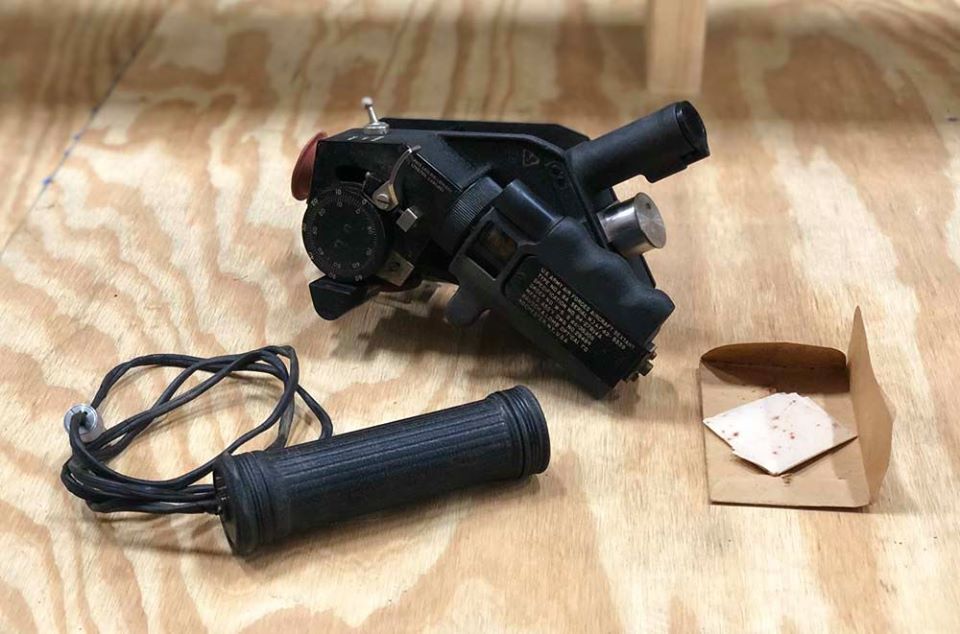
Another of Andy’s donations, this is a Bausch & Lomb Type A-8 Bubble Sextant. Designed by George Gallash and Henry Kurtz in 1937, the A-8 model was one of the primary aircraft sextants for the US military until replaced by the Fairchild Type A-10 in 1944.
While stateside navigation training made sure that Army airmen were capable of using such instruments, the fact that US bombing operations were usually in daylight meant that they were often abandoned in favor of simple math and dead-reckoning.
However, as mentioned in our post on the astrocompass and astrograph, the USAAF situation over Europe reached a point by late-1943 that serious consideration was given to abandoning daylight operations. Just two days after Lucky Thirteen was lost (6 September), for example, B-17s of the 305BG actually began accompanying RAF bombers on night operations. These area strikes were brought to a halt only because of a rapid transfer of Lockheed P-38s to Britain in early-October.
Photo taken 26 October 2019.

The Bausch & Lomb Type A-8 Bubble Sextant in its original carrying case. While the wooden case has lost much of its finish, the leather strap is in surprisingly good shape.
Photo taken 26 October 2019.
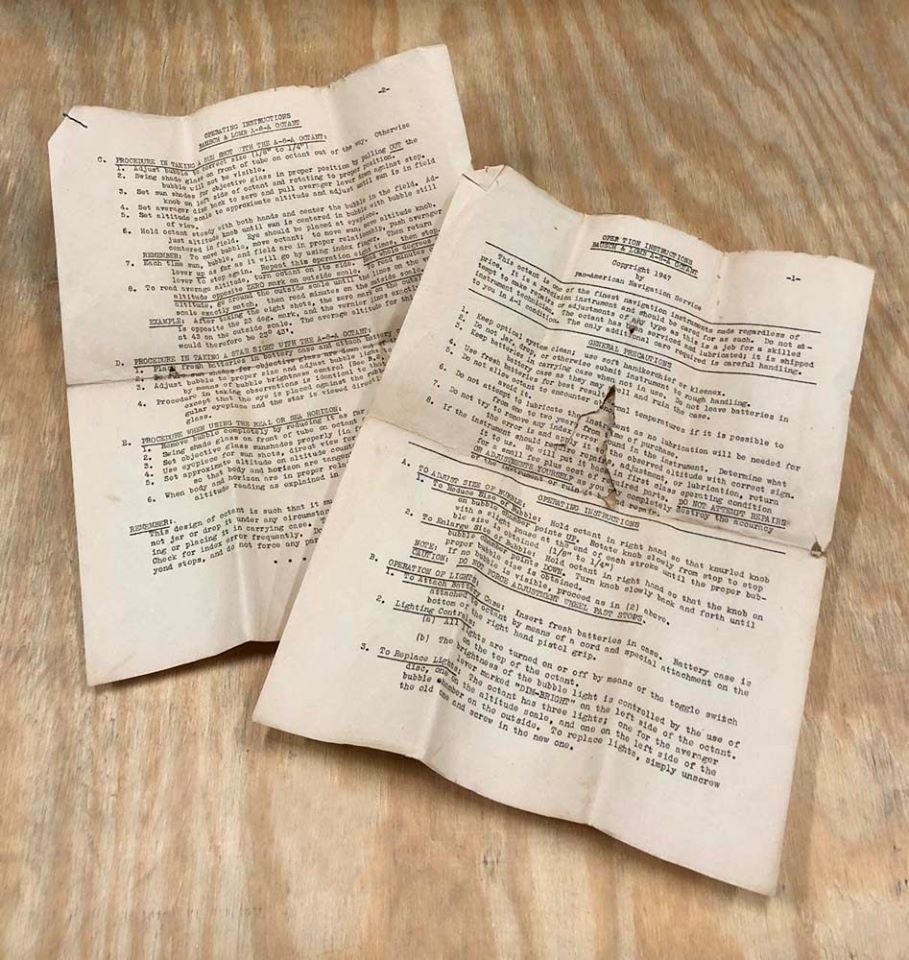
The operating instructions for the Bausch & Lomb Type A-8 Bubble Sextant. The date on these documents show that this particular sextant was last issued in 1947.
It is worth noting that the instructions were written by Pan-American Airways. Being experts in celestial navigation, Pan-Am personnel proved valuable in wartime as navigation instructors.
Photo taken 26 October 2019.
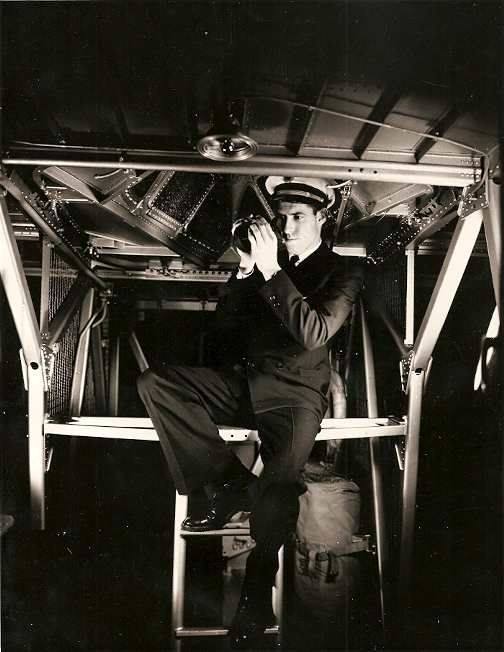
A prewar Pan-Am navigator uses his sextant to triangulate his position.
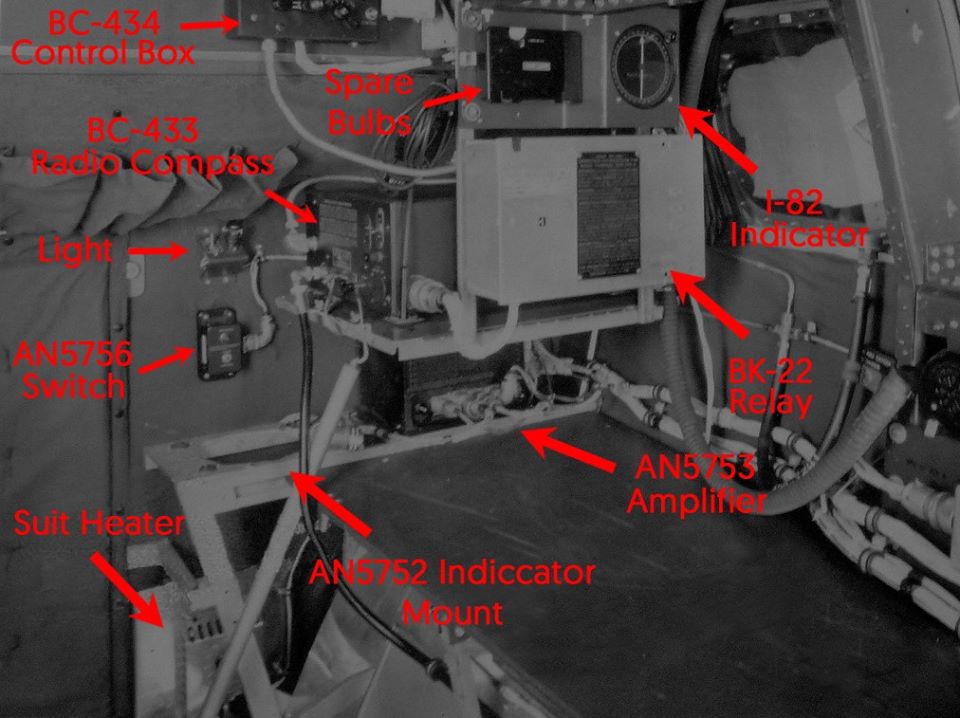
Speaking of navigation…
The Navigator’s position on a B-17F is annotated. Since the factory table has been removed, the Radio Compass Master Indicator has been moved above the Relay Box. The B-17G series would rearrange this position considerably.
You might recall that in our first Odds & Ends post I shared our recreated Navigator’s Compass and Shelf. This was a feature of older B-17s, the D-12 compass being mounted behind the navigator’s chair.
Unfortunately, there was a problem. The large amount of electronic equipment in the nose often hampered compass readings on the D-12. Because of this, the B-17 needed to move the compass to another part of the airplane. This was the gist of the Gyro Fluxgate Compass. The Gyro Fluxgate Compass mounted a Caging Unit and Transponder near the outer wing, using an Amplifier to power the compass’s signal to a Master Indicator at the Navigator’s position and a Slave Indicator at the Pilot’s position.
The last B-17 equipped with a D-12, “D-Dog” (42-30031), was assigned to the 384BG on 9 June 1943. Since Lucky Thirteen was assigned to that same unit on 11 August 1943, she was almost certainly equipped with a Gyro Fluxgate Compass. For educational purposes, we restored a D-12 for her just the same.
We had put off working on the Fluxgate Compass for a while because of its complexity. Surprisingly, within a week of learning of it, Charlie was able to track down all but two of its components!
*The remaining fluxgate components have been acquired since this update except for the system’s brass tuning cable.
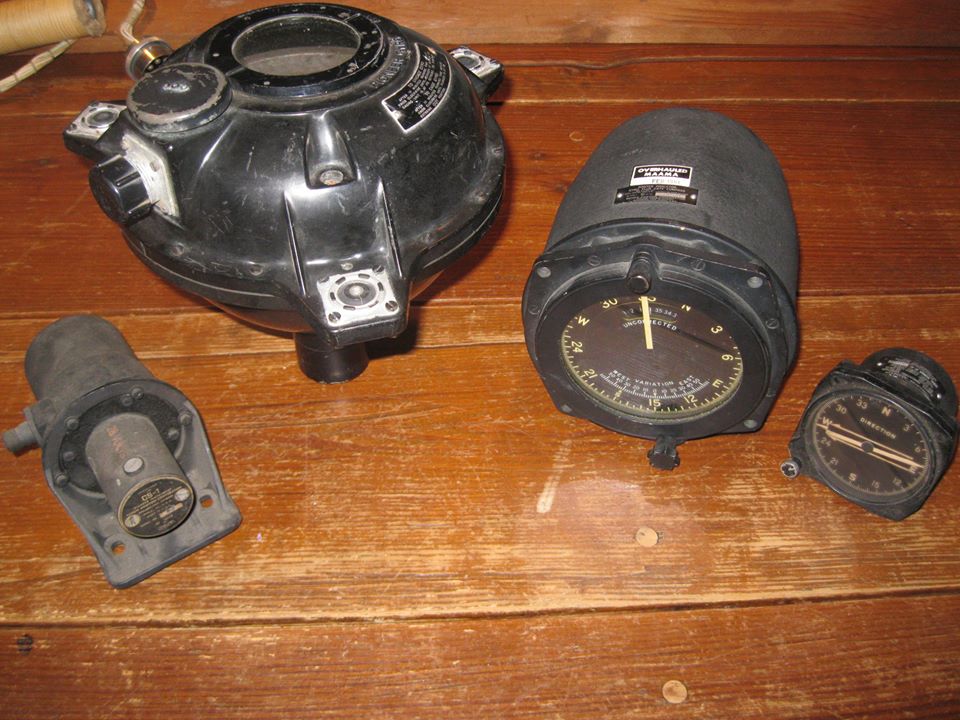
The pieces of the Gyro Fluxgate Compass system are laid out on Charlie’s table.
From left to right: the AN5754 Caging Unit, the AN5757 Transmitter, the AN5752 Master Indicator, and the AN5730 Slave Indicator.
Photo taken 21 September 2019.

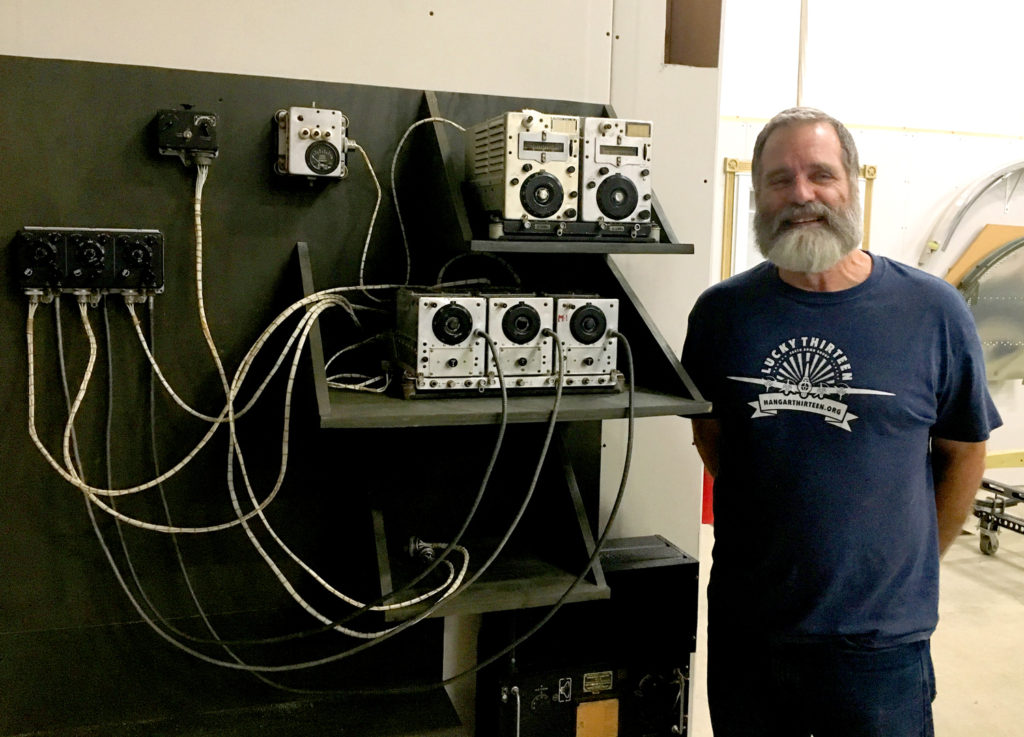

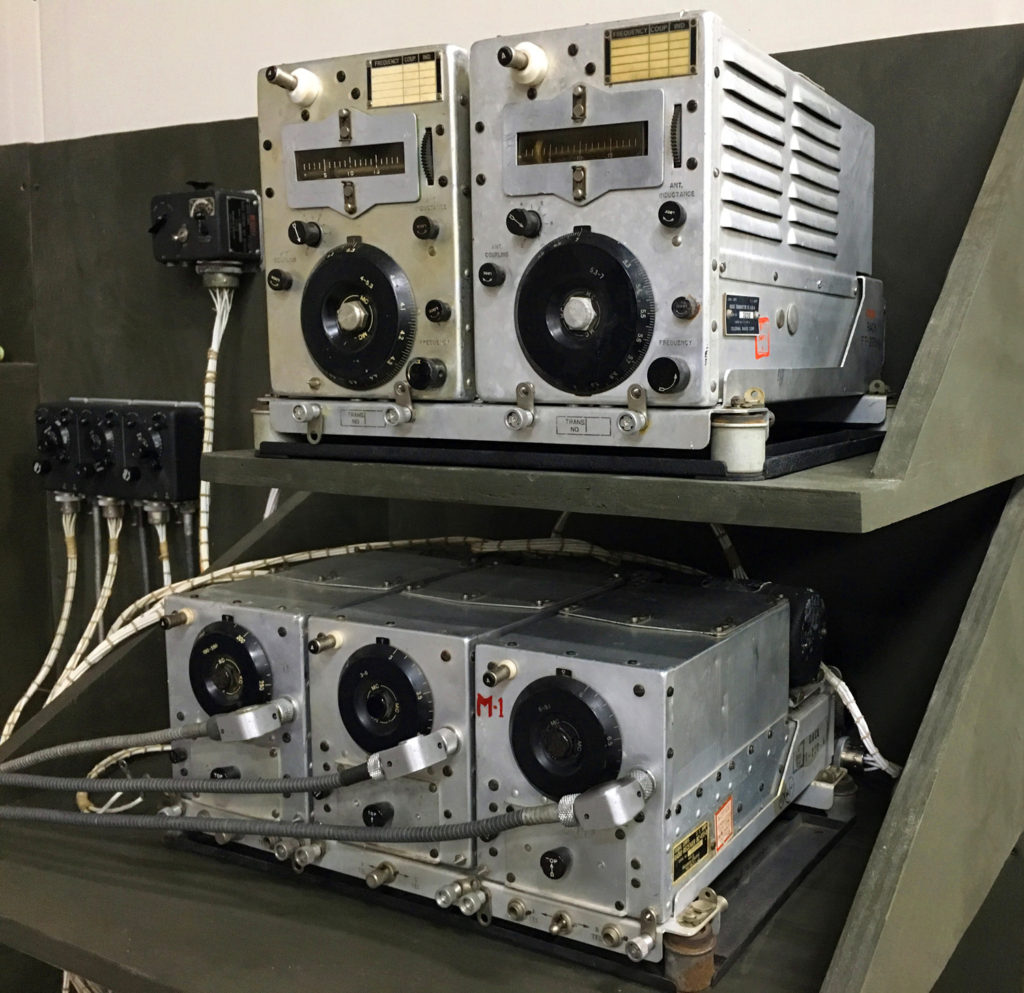
Speaking of Charlie, we are VERY close to finishing the radio systems for Lucky Thirteen.
Several of the display shelves have been put up in the hangar, and the first of the completed systems – the SCR-274 Command Radio – has been put on display. (These pictures were taken shortly after hooking it all up for the first time, so it is all still a bit untidy.)
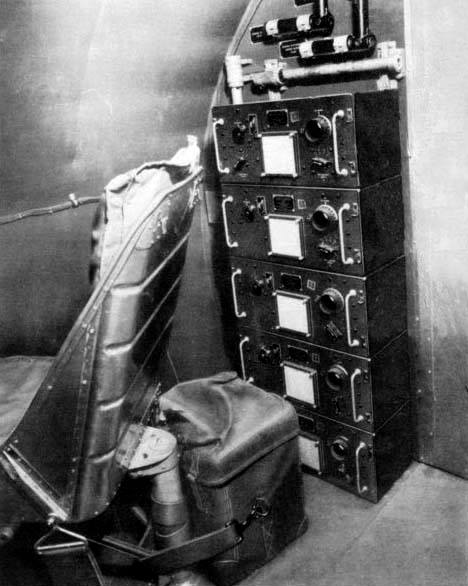
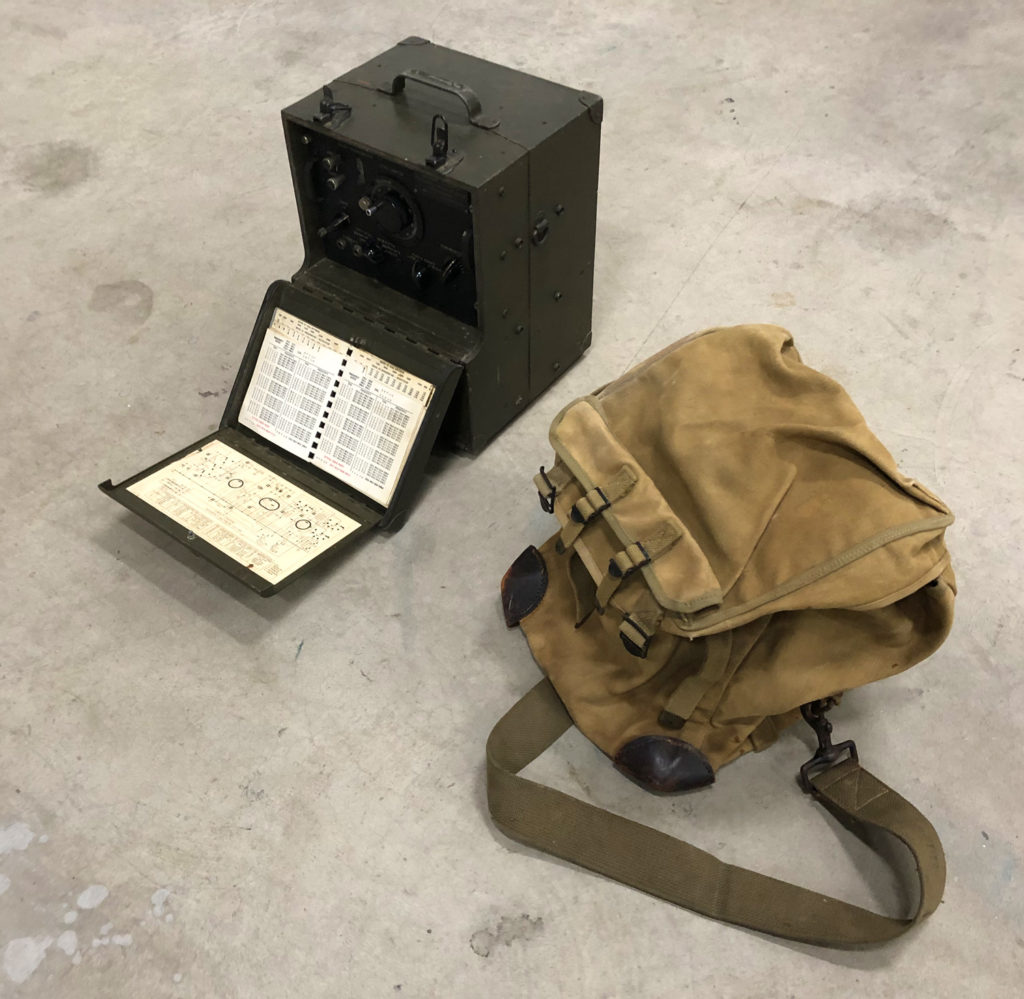
Another radio component finished and on display – the SCR-211 Portable Frequency Meter.
Photo taken 26 October 2019.
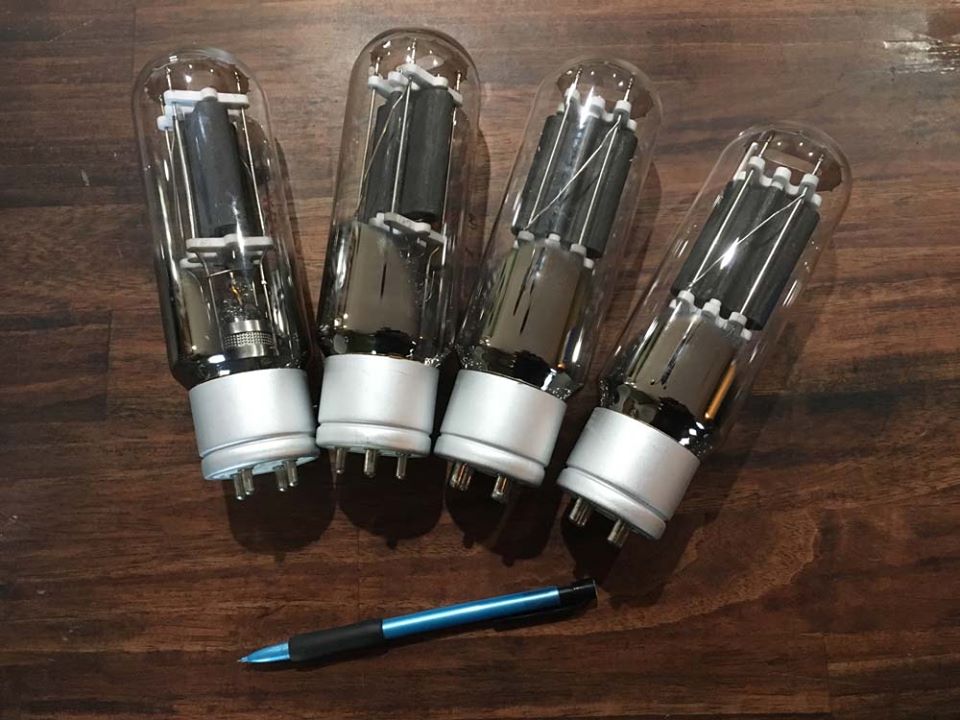
The giant tubes for our BC-375 Liaison Transmitter, with a pencil for scale.
The final major component of the SCR-287 Liaison Radio, the BC-375 transmitter, will be coming to us directly from Charlie’s private collection. Replacing it with a BC-191 (a prewar variant), Charlie only asked that we purchase an additional set of tubes to run both units. These tubes were purchased by our own Chris Wilkinson of the 384BG.
Photo taken 1 November 2019.
*An unissued wartime BC-375 has been donated since this update.

When we first began making the interior doors, it looked as if we would have to recreate the Flight Reports Folder as well. GFE (Government Furnished Equipment) no. 0161366, the Flight Reports Folder was mounted on the cockpit side of the Station 4 interior door. Normally, the folder held a booklet of forms, one of which was required to be filled out after every flight. Thanks to Karl Hauffe who had an original in his collection, we were able to make an exact replica of this folder. The folder is made with 1/8” fir with spruce stringers. And, thanks to my wife Megan, we were able to copy the lettering directly off Karl’s folder.
Photo taken 23 September 2019.
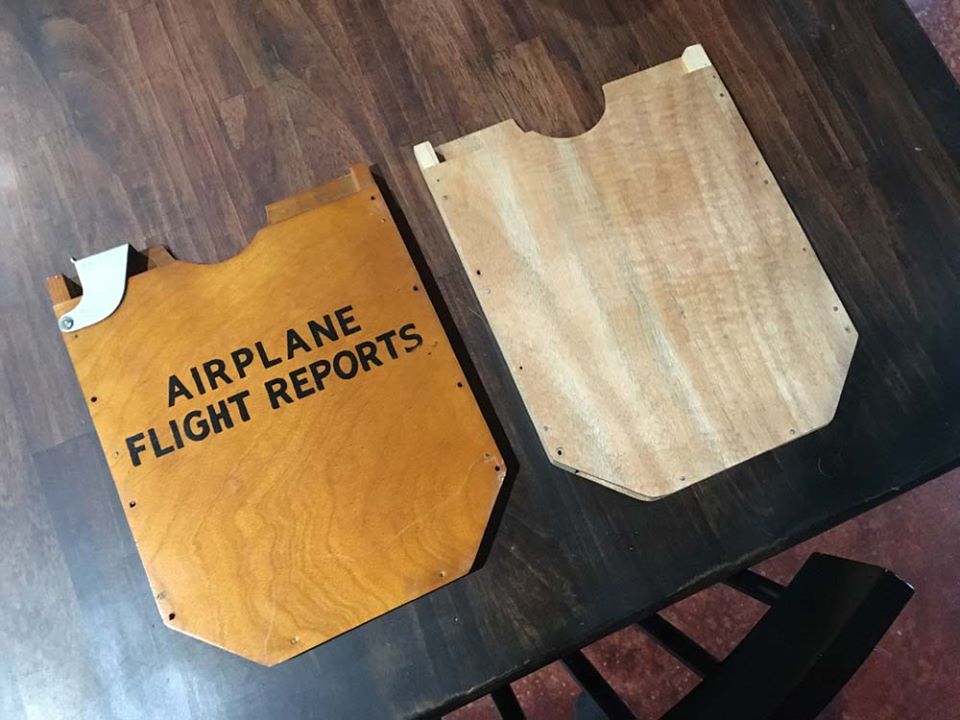
We had been making a few replicas of these when Steve Salinas of the Planes of Fame Museum in Chino, California called asking if we would be interested in an original. We said ‘of course’ and were eager to physically compare how close we were able to get. The answer? Darn close. I had one tack nail an inch too high. Otherwise, perfect. Thanks Steve!
Shown above is the wartime Flight Reports Folder that Steve sent with one of our unfinished replicas.
Photo taken 12 November 2019.
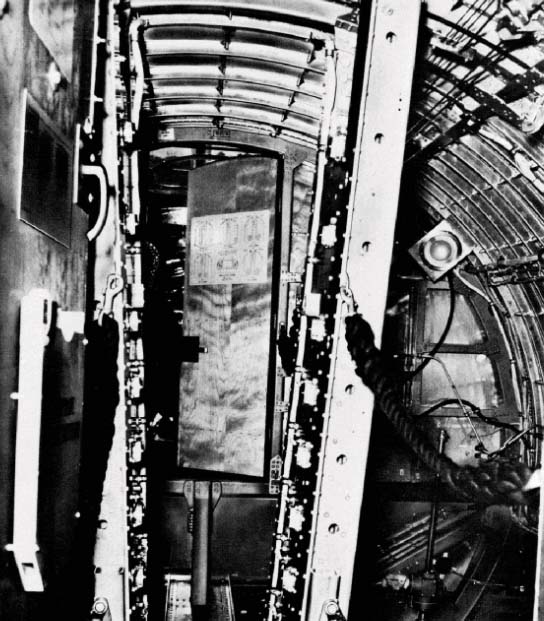
Wartime photos of Station 4 are rather rare because of how little space there was in the cockpit.
This picture is one of a tiny few which show the Flight Reports Folder in the B-17. Note the four spacers which attach the folder to the door here. While attached with four, the folder actually has eight screw holes, as it was designed to be used on a variety of aircraft.
The smaller chart above the folder is the Aircraft Data Chart. This chart lists the weight data, rigging diagram, and system diagrams that are specific to this aircraft’s serial number. The larger chart above is a diagram of the bomber’s fuel system. We have already recreated these charts for Lucky Thirteen and Memphis Belle and will reveal them to our supporters sometime in the future.
This particular B-17 is a G model as indicated by the oversized loading diagram glued on the bayside of the radio room door.
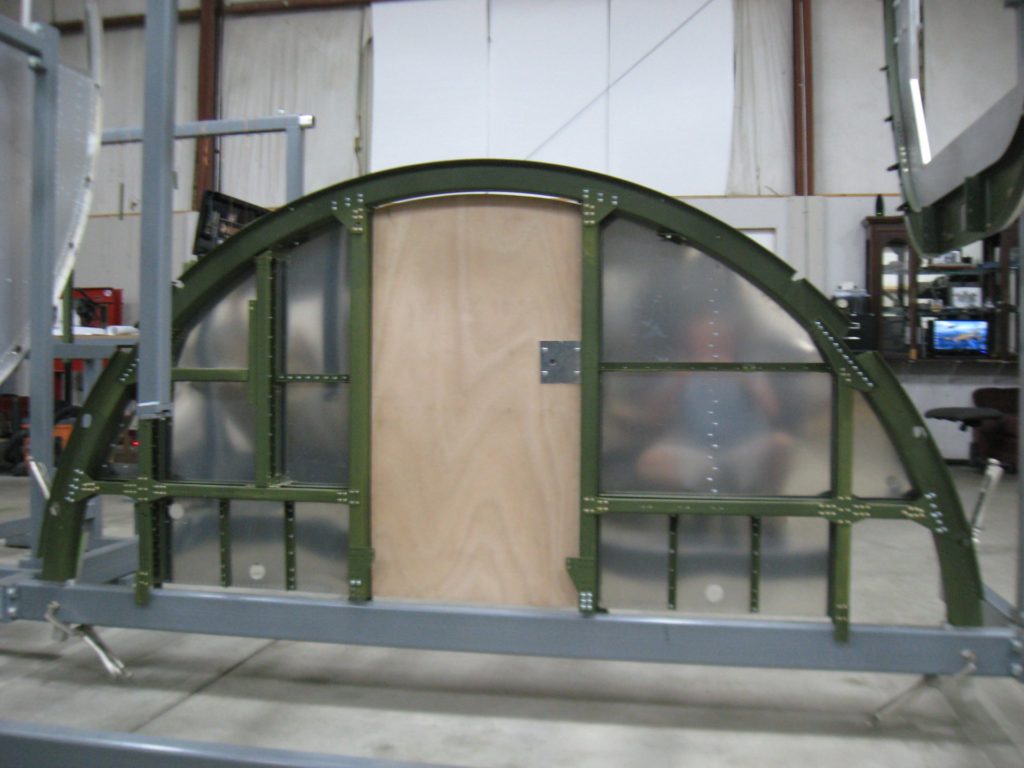
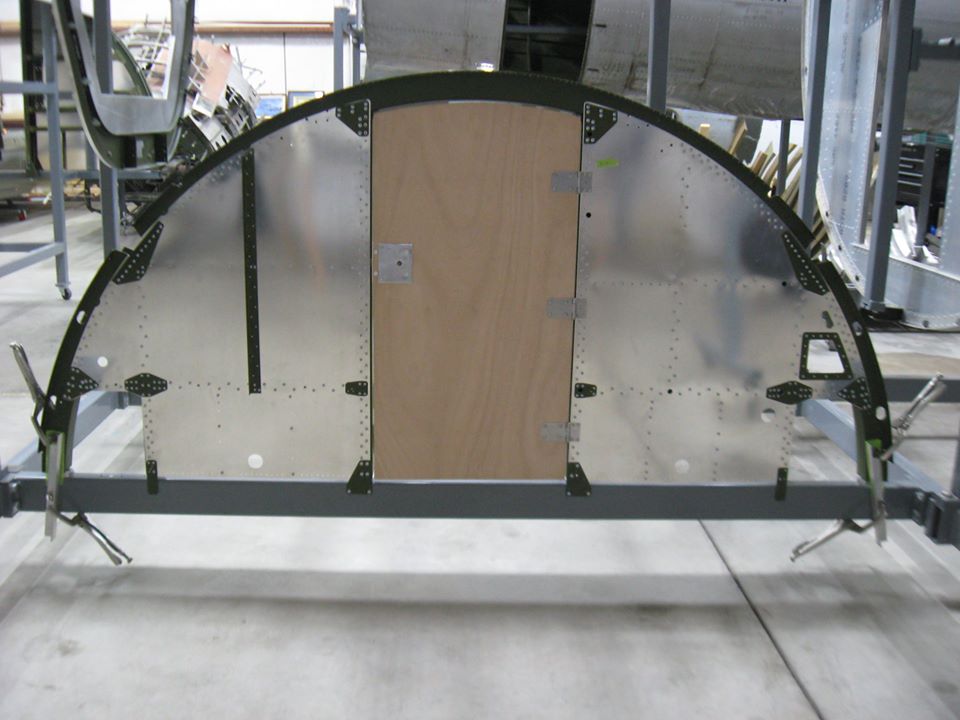
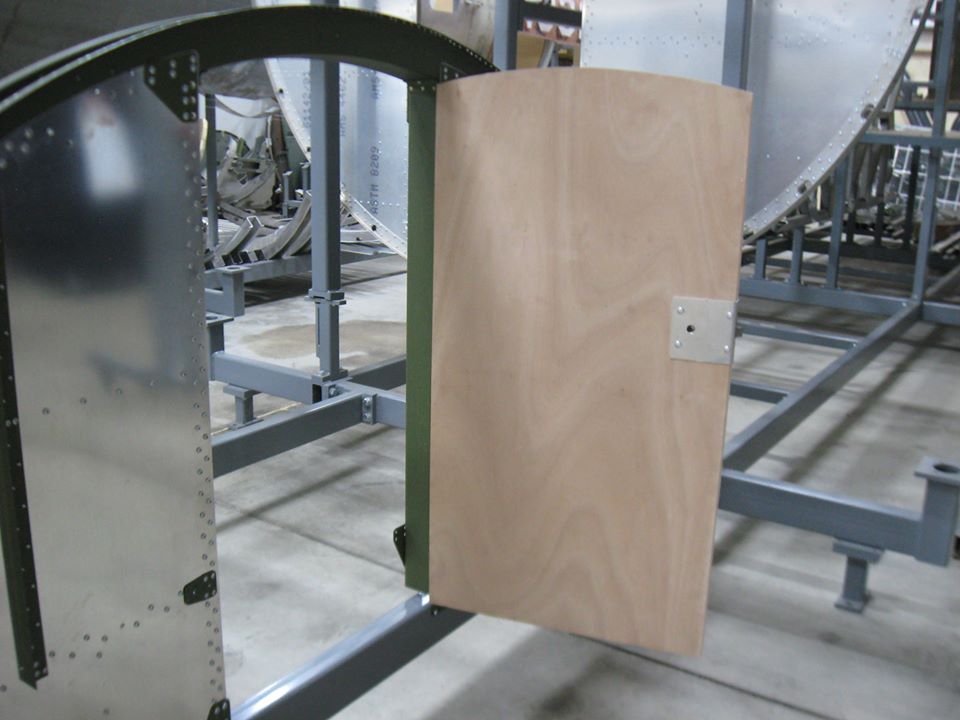
The interior doors were one my first major projects since teaming up with Ray. However, because of issues with hardware, it was not until recently that we were finally able to hang them.
Thanks to the generous help of Midlake Products & Manufacturing of Louisville, Ohio, new hinges were laser-cut to match bueprint 1-18266. Here the first of Lucky Thirteen‘s interior doors are installed – this one being the cockpit door mentioned earlier.

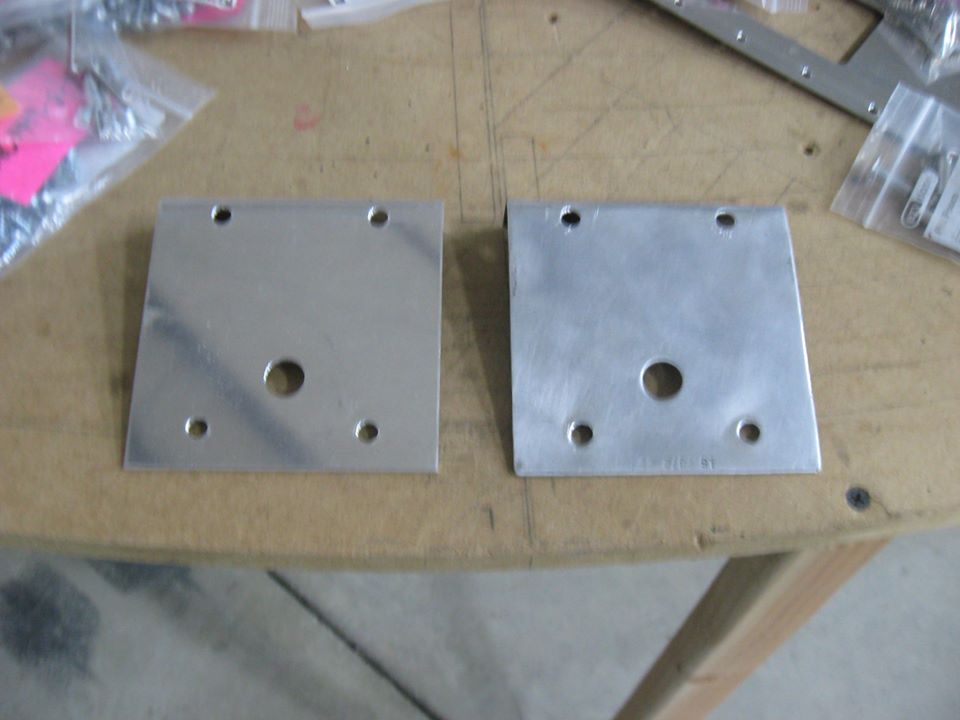
In total the B-17 had three interior doors and one crawlway door.
The door plates are thankfully recreated with ease. Here, a replica front latch plate (left) is matched to an original (right). While not evident in this photo, the original is badly warped, preventing it from fitting over the latch assembly properly.
Photos taken 24 September 2019.

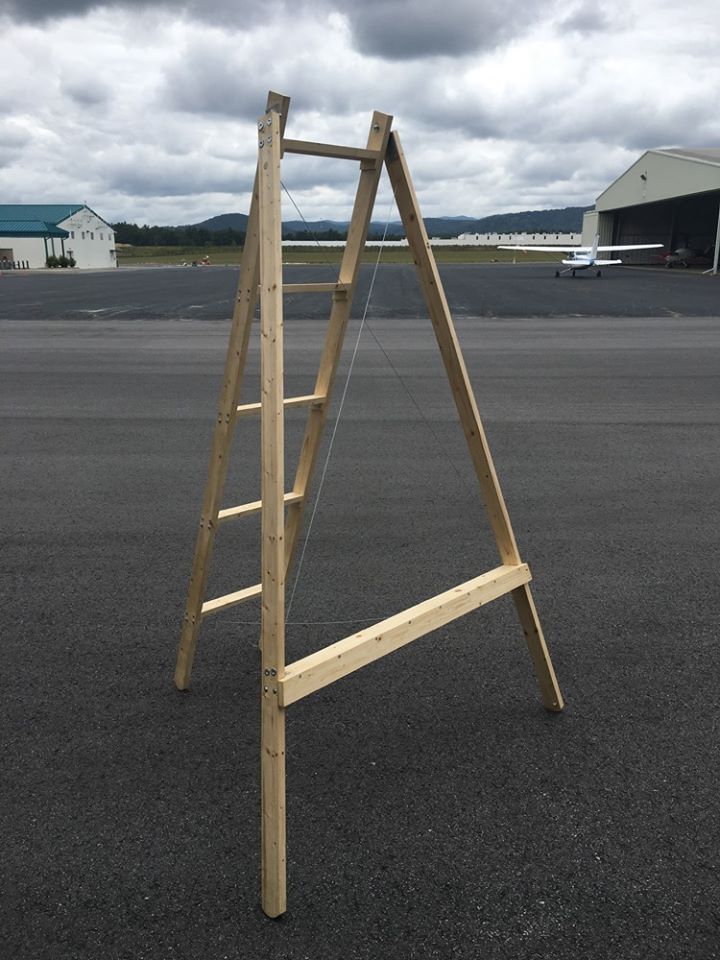
Next, to show something that I am particularly proud of – the Boeing Nacelle & Entry Ladder for Lucky Thirteen.
Since the B-17 is a tail-dragger, the forward entry hatch sits pretty high off the ground. Boeing thought about this, designing a ladder (blueprint 55-5932) which was to be stored in the waist compartment beside the ball turret. Usually, these ladders were absconded by the crew chiefs, and young airmen would often just pull themselves into the airplane as a show of machismo.
Who needs ladders?
Regardless, we thought it would be fun to recreate the one issued to Lucky Thirteen. The design of the ladder changed ever-so-slightly throughout the war, and the ladder issued to this aircraft used the same hinges as those used on the interior doors. Thankfully, when Midlake Products & Manufacturing made our batch of hinges, they sent a couple spares.
Made of spruce, the forward legs of the ladder not only fold forward but spread apart, using 1/16 wire as a catch – once the wires are pulled taught, the ladder is level with the ground. A cross-beam on a folding hinge locks the forward legs into place.
This ladder is an exact replica, down to the smallest detail.
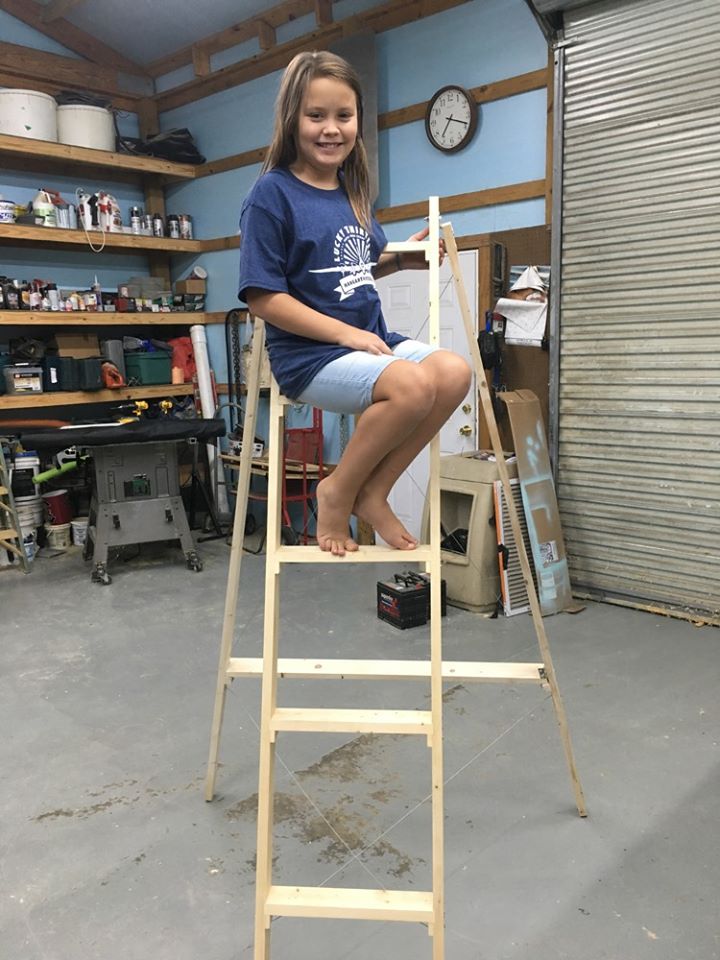
As much as I’d love to keep it on display for visitors, Ray made a good point when I brought it to the hangar. He has kids and would hate for one to try and climb it when he isn’t looking. Understandable. It did remind me that the very first person to climb the ladder was my little cousin Brooke, who often hangs out with me in the wood shop.
It’s a strong little ladder. Most of my visitors assumed it was for picking peaches, and it seems everyone has wanted to climb it!
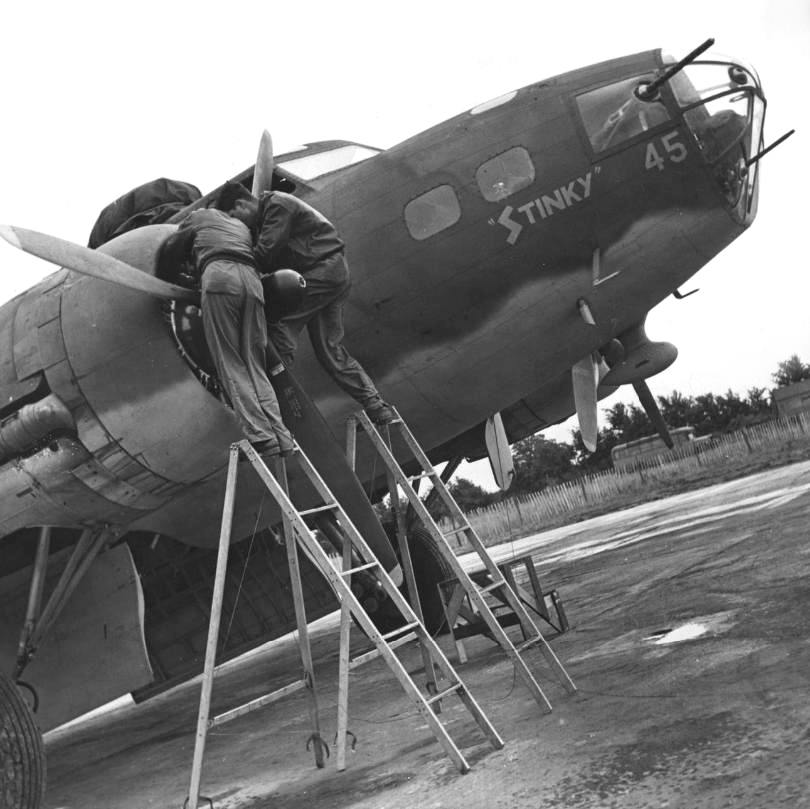
Mechanics tend to Engine #3 on Stinky (41-9045, 97BG) just days before the US 8AF’s first combat mission. Note the straps at the base of the ladder, used to hold it when folded for storage.
The 8AF’s first mission took place on 17 August 1942 and was composed of 18 B-17s escorted by 108 Spitfires of RAF FC. 12 of the bombers struck the marshalling yards of Sotteville-lès-Rouen, France in preparation for the upcoming Dieppe landings, while another six flew a diversionary route. While historians know the identity of the 12 strike aircraft, we still do not know the identity of the six diversion bombers. Stinky may very well have been part of the diversion force.

A staged photo of ground crews at work on Nine O’ Nine (42-31909, 91BG). Despite being just a year old, her OD paint has faded considerably.
Note the ladder with the custom painted stripes forward of Engine #2 – this is an older ladder akin to the one we just finished. The other ladders here have steps on the opposite side, which Boeing started adding partway through the G-series.
The man painting the bomb on the nose is MSGT Rollin L. Davis. The crew chief for Nine-O-Nine and Outhouse Mouse (42-31636), Davis nursed the bombers through 140 and 139 combat missions, respectively – an unrivaled accomplishment amongst USAAF mechanics. Thanks to Clive Stevens for pointing Davis out to me!

The crew of Memphis Belle (41-24485, 91BG) prepare to climb a Boeing Nacelle & Entry Ladder in this still taken from William Wyler’s 1943 footage.
Lastly, I want to share one more item Andy donated to us – a framed picture of a pair of patches worn by TSGT Jack W. Hunter, a crew chief from the 546BS/384BG.
This the same unit to which Lucky Thirteen was assigned.
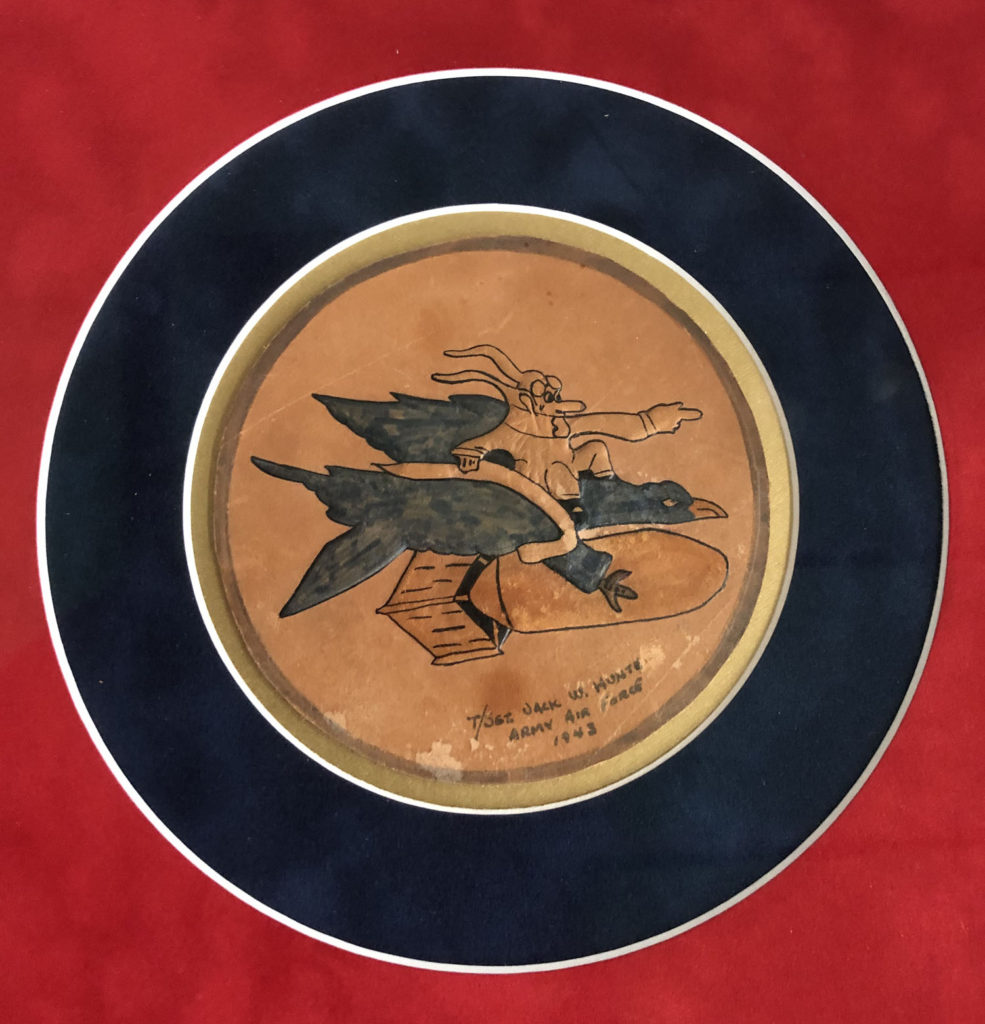
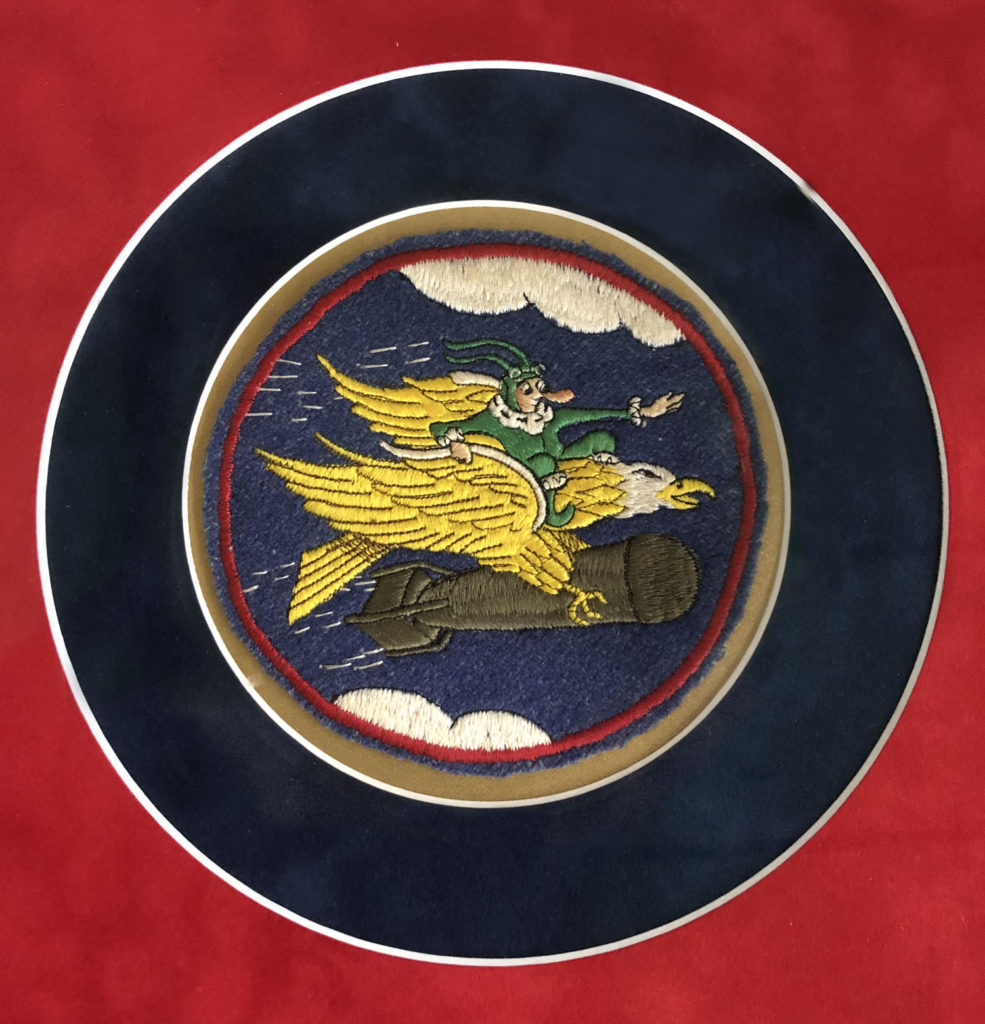
Hunter was assigned to the 384BG on 23 January 1943 and was the crew chief on Homesick Sal (42-39927), Cat’s Sass (42-29935), Look Homeward Angel (42-39991), and Piccadilly Commando (42-30040), before being transferred to another unit on 14 March 1944. As such, these mementos are from someone who would have been intimately familiar with Lucky Thirteen.
These patches are both theater-made, with one being sewn locally and the other being a hand-painted leather patch.

Hunter actually signed the 384BG’s wing panel memorial back in 2014, a printed copy of which Andy also brought to the hangar.
Thank you Andy for these very generous gifts and a special thanks to Jack Hunter for his contributions overseas – it is for people like you, Jack, that we do what we do.
